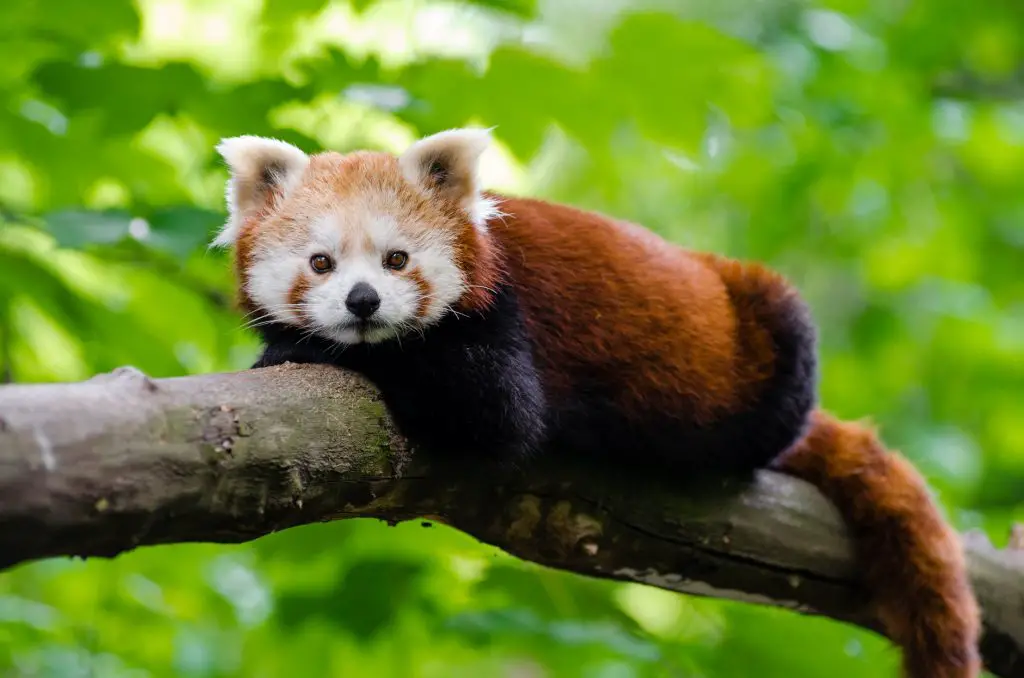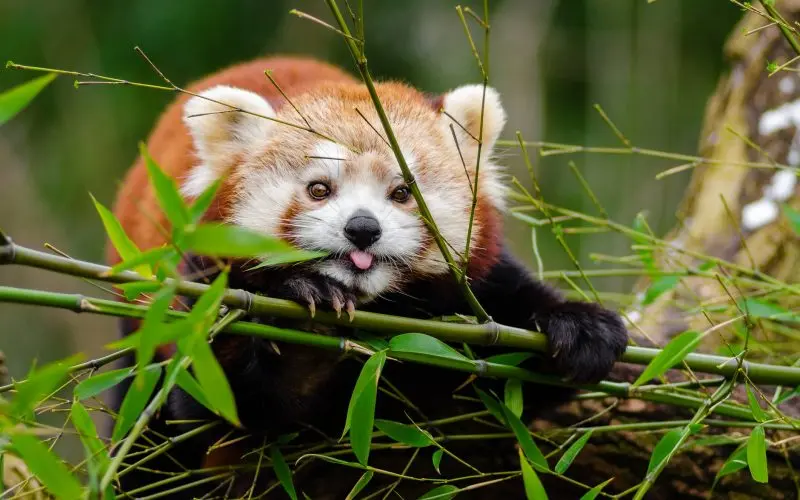Table of Contents Show
The red panda is mostly found in South-Western China and the Himalayas. It is a very curious mammal as even though it has the name ‘panda’ in it; it does not relate much with the panda but more with skunks and raccoons. The red panda has a diet consisting of lizards, fruits, vegetables, bamboos, leaves, birds and eggs. The red panda is a bit heavier than the domestic cat even though it’s similar in size. It is a solitary animal which is usually active throughout the day.
Unfortunately, according to IUCN the red panda has been classified as an endangered species due to the massive decline in its population around the world. According to the IUCN red list, it is being stated that the population of the red panda is below 10,000.
The major reasons of Red Pandas being endangered are:
- Habitat fragmentation
- Habitat destruction
- Deforestation
- Poaching (for fur and more)
- Hunting (as a sport)
- Depression during inbreeding
Poaching and habitat loss are ongoing even after rules and regulations have been passed by several countries such as China and Myanmar to protect the rare red panda from becoming endangered. China passed the Wild Animal Protection Law and Myanmar passed the Wildlife Act of 1994. Habitat loss and poaching are the main reasons why populations of the Red Panda are increasingly being fragmented.
How did the Red Panda become Endangered?
Low Reproductivity
What doesn’t help is the fact that the red pandas have a genetically low birth rate and also the fact that they naturally have a very high death rate as compared to other living members. If this carries on, it is being stated that the decline of the red panda will carry on at a 10% rate each year leading to its inevitable extinction.
Habitat Loss and Destruction
The red pandas are constantly suffering from habitat destruction. This issue has affected almost every living animal on the planet; but due to their previously mentioned issues of genetic reproduction, the red panda are suffering more from it than other various members. This habitat destruction is ongoing due to natural activities but mostly due to human Intervention.
Human activities such as deforestation is carried out to extract lumber from trees, urbanization to make way for land to compensate for the increase in the population of the planet, for agricultural purpose to feed the increasing population of the Earth and more.
Many countries have made protection areas which allow the red panda to live freely without any likelihood of being in danger. This way forests are protected from habitat loss and various other activities that may affect the red panda but the issue is that the animal’s natural habitat mostly falls outside of this zone.
Climate Change
Climate change has also been a contributing factor to the decline in the population of the Red Panda. As we have previously mentioned; one of the most important food sources for the red panda is the bamboo, the bamboo requires a specific high altitude for it to grow sufficiently.
As climate change has sought through the planet and caused a change in the nursery temperatures of various regions around the Earth, the growth of bamboo has also been significantly hampered. As the growth for a bamboo has decreased, the red panda have not been able to sufficiently get adequate source of this food which has led to them dying via starvation.
Poaching
Like many animals, the red panda is also threatened by poaching due to its magnificent red and brown fur being a constant attraction to many. The animal fur is said to be sold in Bhutan, while in China it is considered as a symbol of happiness and good luck for newlyweds in the country.
The Red Panda is also mistakenly caught in place of wild pigs or deer. The Red panda is a very active animal; but it is not an aggressive creature and lacks self-defense actions to protect itself from humans or other predators in the wild. This makes them easy targets for opportunistic hunters and butchers which has also led to its sad decline.
Solutions to Red Panda Endangerment
The interest of the protection of the red panda is very high as people have an increased awareness of the endangerment of species nowadays. Although the awareness and enthusiasm of the people are high; further actions still need to be taken to prevent the red panda from going into extinction. Zoos are playing a passive part in contributing to the extinction by captivating these animals in zoos and carrying out getting forceful inter breeding programs which have not helped the cause at all.

Countries and Wildlife organizations should take a more stronger approach in raising the population of the red panda and passing strict laws and regulations which prevent the poaching and hunting down of this exquisite animal so that it can be saved like many others in the bus from global extinction.






